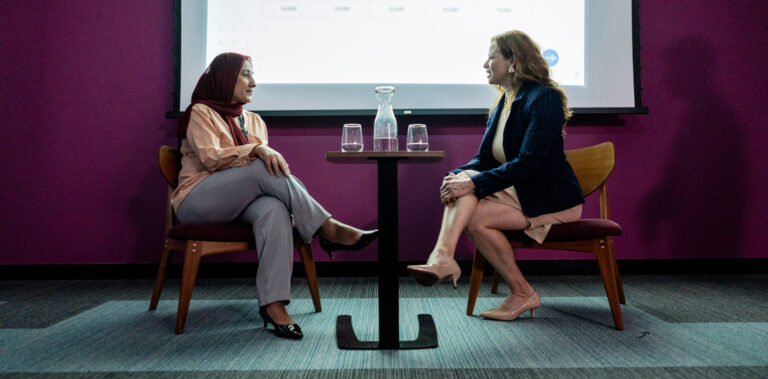Scientific leaps towards effective communication

Great communication may be an art, but there is science behind it
Mid-October saw Bladonmore play host to the first in a series of evening panel discussions – this one in partnership with Women Leaders in Communication. The session explored what science can teach us about gaining cut-through in a noisy and distrusting world – and the extra hurdles women face compared to their male counterparts.
On the panel were Bladonmore’s Sandra Davis, who has developed much of the agency’s thinking about the science of communication; and neuroscientist and author of The Gendered Brain, Gina Rippon. The session discussion revolved around ways to gain attention and making your communications more effective. As George Bernard Shaw once wrote: “The main problem in communication is the illusion that it has taken place.” So, what can you do to really get through to people?
Key takeaways
Understand the person in front of you
One thing may be said, but many things may be heard. What people take away can vary hugely depending on various factors. Say the same thing to ten different people, and the chances are that ten slightly different messages will be taken away. Context is key. The listener’s experience, knowledge, hopes and belief systems will play their part. For example, different people face different pressures, as summed up by Reshma Saujani, founder of Girls Who Code: “We teach our boys to be brave and our girls to be perfect.”
These different interpretations could be standing in the way of what you are trying to communicate. That’s particularly true if you are trying to change or encourage behaviour in a specific way. The key is to understand audience needs and to tailor your message to your accordingly.
Be inclusive
Humans may have invented the wheel, built empires and walked on the moon, but we can experience negative and positive reactions that will then drive our behaviour. We are hardwired to be social, and if made to feel excluded, that loss of self-esteem activates the same area of the brain that is activated by real pain. It could just be one careless word in a whole speech. So, think – deeply – before you communicate.
Be aware of stereotypes
Our brains are not just processing systems; they learn to create shortcuts. For example, when you hear thunder, you expect lightning. This includes social rules of thumb – or stereotypes: you see somebody for the first time and instantly your brain provides you with a whole list of pre-judged information. For instance, that women are empathetic and therefore good at networking, and men are systematic – therefore good at science. Try to put aside these preconceptions. Remember, you are subject to preconceptions, just like those to whom you are talking.
Say it with a story
Most people process and understand information better as stories. Stories are powerful because they make us feel as well as think. When we hear a story about a recognisable person, our brains release oxytocin (the empathy hormone), which helps us to identify with the characters involved. In other words, we start to care, and that will impact the way we act. Think along the lines of charity campaigns that tell the story of one person, even when the scale of the problem can affect tens of thousands.
Our bodies will react to stories if they are real. Think about the last time you screamed at a scary movie or cried watching TV. They help us to build new connections in our brains, and to learn more easily.
Be specific
Business leaders tend to talk about big abstract ideas, but these are often open to interpretation and too easily forgotten. Detail is what makes high-level concepts stick. Think of stand-up comedians at a large stadium gig. How does one person command the attention of a 15,000 strong audience with nothing else apart from their words? Through personal (humorous) anecdotes, engaging people at an individual level, and painting vivid verbal pictures.
Don’t give up
Part of our brain is a braking system that is trained by exposure. When your brain is telling you “I can’t do this” it is trying to get you out of a situation that it recognises is unusual or uncomfortable. Don’t listen. As you gain experience, your brain will reboot and realise that you can cope with these issues.
Work together to make change
There are still too few women in top jobs. Quotas and shortlists are all very well, but what makes the biggest difference is stewardship. We need to work together – men and women, junior and senior – to change the status quo.
If you are interested in attending any of Bladonmore’s breakfast seminars or evening panel discussions, please contact hello@bladonmore.com
Share article

